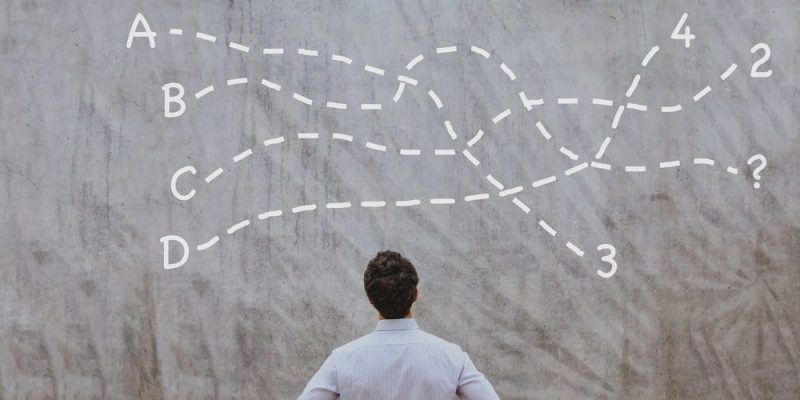We explain what a conclusion is, what its objectives are and the types that exist. In addition, its characteristics, structure and some examples.
What is a conclusion?
 In logic, the final proposition of an argument is called a conclusion . Its content follows in one way or another from the previous premises (as long as it is a valid argument).
In logic, the final proposition of an argument is called a conclusion . Its content follows in one way or another from the previous premises (as long as it is a valid argument).It is a very different proposition from an opinion , since it is usually reasoned or argued to finally reach a valid thought or with a certain margin of certainty.
It is also called a conclusion or conclusions to one of the final sections of a report , monograph , essay or reflection. There, the reading is closed by explaining the arguments and statements of all the previous work. The work is considered as a complex premise, from which the conclusions follow.
Finally, there is talk of "drawing conclusions" to refer to the act of thinking of interpreting a series of premises or basic ideas and from them proposing some other that leads to some kind of finding on the matter. It is commonly considered a conscious way of learning.
Objectives of a conclusion
 A conclusion can have multiple objectives .
A conclusion can have multiple objectives .In general, it is proposed to produce some type of thought construction .
Subsequently, it tries to lead to learning , either in the person who formulates it or in others.
Thus, a conclusion can serve to:
- Provide new, final, relevant information on the subject.
- Demonstrate the learning produced in the consideration of the premises.
- Reflect on the relevance of the problem established in the argument.
- Provide considerations regarding the appropriate way of thinking about the problem.
- Transmit the personal experience of the person who argues and their approach to the premises.
Types of conclusions
 We can talk about the following types of conclusion, according to their nature:
We can talk about the following types of conclusion, according to their nature:
- Logical or formal: That which follows from its premises and is verifiable by any of the classical methods of formal reasoning, such as the syllogism or deduction.
- Personal: A conclusion rooted in the subjectivity of the person who formulates it, but that is not for that reason equivalent to an opinion. Personal conclusions must be valid, verifiable, even if they arise from individual experience.
- Theoretical: Those that propose new possible knowledge on which to build new research or reflections on the subject in the future .
- Summary: Summary conclusions are those that condense or round off what has been seen or argued previously, offering a kind of final recapitulation before adding final ideas.
- Recommendations: Those that reflect on the way in which the argumentation or investigation was carried out and offer clues to the future researcher from it
Why are the conclusions important?
Without the conclusions, the investigations and reflections would remain restricted to their premises and the presentation of information. No unifying, determining or significant value would be obtained . In other words, everything would remain at a superficial or diagnostic level, without a final learning being extracted from it.
A good conclusion
 An appropriate conclusion is generally one that fulfills what was promised , depending on whether it is a scientific investigation , a philosophical reflection, or a logical problem. In that sense, the good conclusions are:
An appropriate conclusion is generally one that fulfills what was promised , depending on whether it is a scientific investigation , a philosophical reflection, or a logical problem. In that sense, the good conclusions are:
- Relevant: They have to do with the matter addressed in the premises and with the general approach of reasoning.
- Concise: They express something definite or determined, and not vagueness or repetitions of what has already been said in the body of the premises.
- Valid: The reader must be able to understand how these conclusions were reached, that is, they cannot be gratuitous or magical, pulled by the hair.
How are the conclusions drawn?
To draw good conclusions you must:
- Review and understand the premises: A valid conclusion cannot be reached from an unknown or half-known topic. It is convenient to review what has already been said and write down the most important points separately to make a kind of summary or synthesis.
- Round up or take up the problem: From the ideas in the synthesis, we can compare them with what was said in the introduction or the initial statement of the problem, to know how our vision of the matter has changed and what new ideas we have, what new knowledge was produced.
- Write the conclusions: Once we understand what was obtained from the research, we can write a text in which we explain what is the relevance that this has for the field of studies, human life or knowledge in general. Or, we can explain what knowledge in this regard deserves to occupy the place of closing the work, that is, with what final element on the subject we want the reader to keep.
Structure of the conclusion
 The conclusions can have any structure that we want . For example, few paragraphs of an essay tone can be written . Or, it can be an orderly and hierarchical outline of notes to facilitate reading.
The conclusions can have any structure that we want . For example, few paragraphs of an essay tone can be written . Or, it can be an orderly and hierarchical outline of notes to facilitate reading.In any case, it is usually recommended that some conclusions consist of:
- A summary of what has been read that provides a new general perspective on the subject.
- A series of final ideas that give closure to the subject by providing new directions to it.
- An emphasis on the importance of what has been learned and its practical, theoretical or methodological utility.
- A series of recommendations for future researchers or difficulties encountered throughout the process.
Conclusions in academic works
In thesis, academic reports or school monographs, the conclusions usually constitute the closing block of the development of the topic , as a final answer to what was raised in the introduction. For this reason they are located at the end, before the annexes and bibliographic references, and are usually extensive.
Difference between conclusions and opinions
 As we have already said, conclusions are distinguished from opinions in that they must be supported by judgments and reasoning . They cannot simply be free judgments or hunches, like opinions.
As we have already said, conclusions are distinguished from opinions in that they must be supported by judgments and reasoning . They cannot simply be free judgments or hunches, like opinions.While there are informed and uninformed opinions (and the conclusions are more like the former), a certain endeavor for valid and verifiable reasoning is expected from the conclusions. Thus, others may reach similar conclusions despite having different personal values.
It can help you: Opinion article
How to draw conclusions?
 To draw conclusions we must reflect on the thought process carried out in our research. In other words, we must be aware of what we did and how we did it.
To draw conclusions we must reflect on the thought process carried out in our research. In other words, we must be aware of what we did and how we did it.An investigation always yields conclusions , even if the initial hypothesis is not confirmed. A series of failed experiments also allow conclusions to be drawn, since everything is learned.
The key to doing so, then, is being able to explain to others what exactly was learned once the argumentation is over.
Examples of conclusions
Here are a couple of examples of conclusion:
A formal conclusion (syllogism) :
All mammals are warm-blooded.
Since humans are mammals,
Conclusion: The human being has warm blood .
-
A written conclusion (in a medical diagnosis) :
She has pursued her studies in The United States, where she has graduated in Business and Economics and is currently finishing her Master studies in International Economics and Finance. Miss. Amputee is fluent in three languages: English, Spanish and Russian and has elementary knowledge of French and Italian. She love exploring how Collaborative Research Group can become the best tool to achieve the (necessary) educational change. .
Leave a reply
Your email address will not be published. Required fields are marked *Recent post

Sport: What Is It, Types, Risks, Features, Characteristics and Examples
September 23, 2021

Dogs: Emergence, Features, Characteristics, Feeding and Breeds
September 24, 2021

Story: Definition, Elements, Structure, Features and Characteristics
September 24, 2021

Essay: Definition, Structure, Features, Characteristics, How to Do It
September 24, 2021
